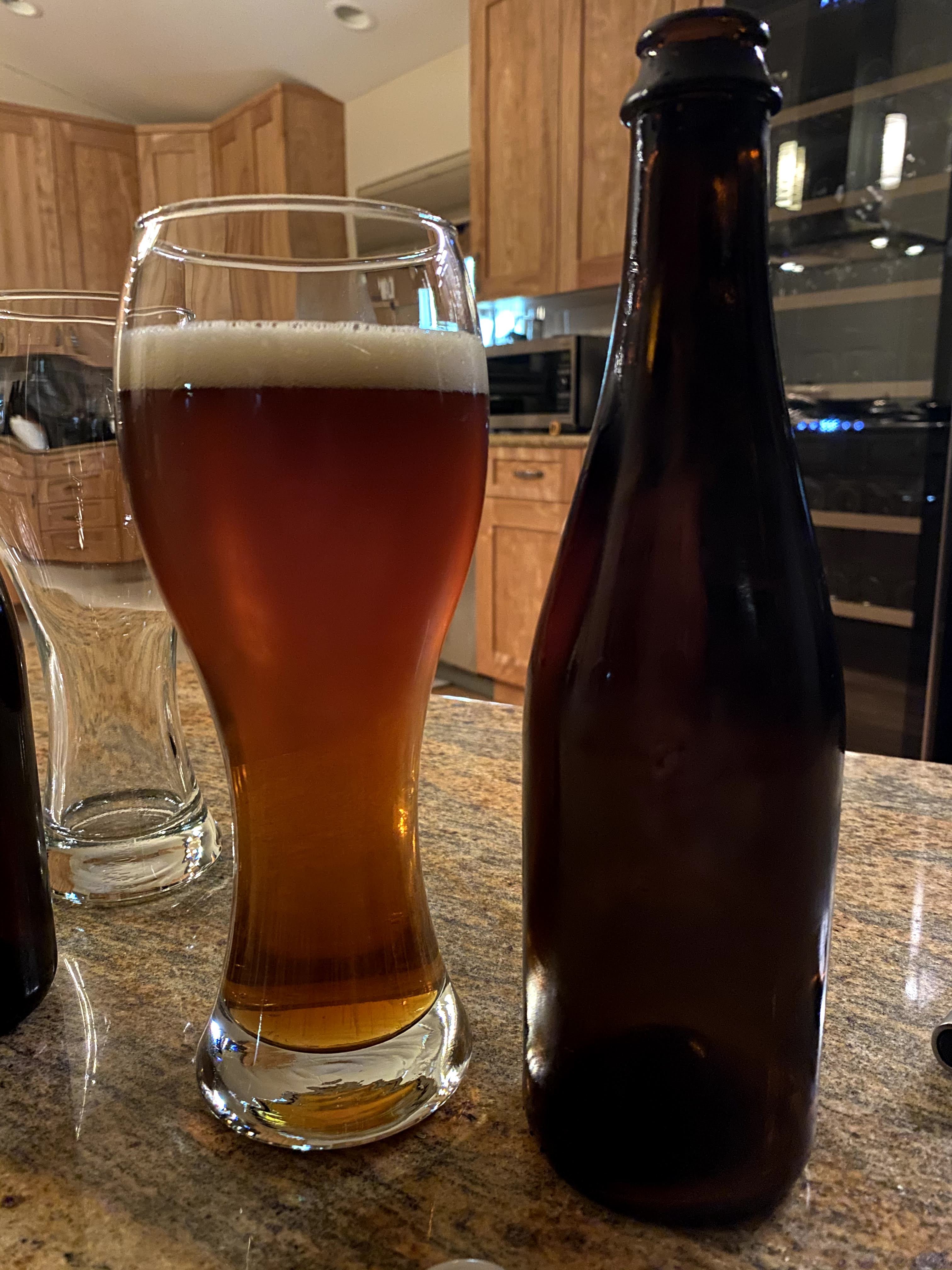Daniel B
Member
- Joined
- Apr 19, 2020
- Messages
- 9
- Reaction score
- 9
So yesterday was brew day for this kit and I am trying to figure out if I did something wrong (hopefully, what exactly it was) and if my yeast needs more friends to get the job done.
Hitch number 1: I read the instructions and the recipe sheet several times and there's still one ambiguity regarding the corn sugar. The kit comes with 8oz in two 4oz bags. The listing specifically says that none of the kits from MoreBeer come with priming sugar, so I reasoned that all the grain/sugar/extract/hops from the kit was meant for the boil on brew day. The instructions call out not adding the 4oz bag of corn sugar (singular) but they're also really generic and not specific to the specific kit. I got 5oz of priming sugar when I ordered, so I know that what the store page thought was my priming sugar is still safely in the bag. Did I over-sugar my wort?
Hitch (blessing?) number 2: I got a high gravity yeast. I happened to have chosen a yeast that supposedly wants a sweeter wort to make a higher ABV, but I don't want to overwhelm them. I even gave them extra nutrients.
The whole thing is a standard 5-gallon, partial boil that I cooled fairly quickly considering I had no chiller. My OG was 1.111 at around 70-72º (so maybe a bit more) and this was the temperature I pitched at. That OG is after bringing the cooled partial boil wort up to 5 gallons again with filtered water.
So now that we're coming up on 24 hours (I'll start expecting the airlock to be moving tomorrow), should I order some backup yeast in case it gets stuck? Also, any insight into the corn sugar content of the kit and now my wort is appreciated. I also asked on the product page.
Hitch number 1: I read the instructions and the recipe sheet several times and there's still one ambiguity regarding the corn sugar. The kit comes with 8oz in two 4oz bags. The listing specifically says that none of the kits from MoreBeer come with priming sugar, so I reasoned that all the grain/sugar/extract/hops from the kit was meant for the boil on brew day. The instructions call out not adding the 4oz bag of corn sugar (singular) but they're also really generic and not specific to the specific kit. I got 5oz of priming sugar when I ordered, so I know that what the store page thought was my priming sugar is still safely in the bag. Did I over-sugar my wort?
Hitch (blessing?) number 2: I got a high gravity yeast. I happened to have chosen a yeast that supposedly wants a sweeter wort to make a higher ABV, but I don't want to overwhelm them. I even gave them extra nutrients.
The whole thing is a standard 5-gallon, partial boil that I cooled fairly quickly considering I had no chiller. My OG was 1.111 at around 70-72º (so maybe a bit more) and this was the temperature I pitched at. That OG is after bringing the cooled partial boil wort up to 5 gallons again with filtered water.
So now that we're coming up on 24 hours (I'll start expecting the airlock to be moving tomorrow), should I order some backup yeast in case it gets stuck? Also, any insight into the corn sugar content of the kit and now my wort is appreciated. I also asked on the product page.





